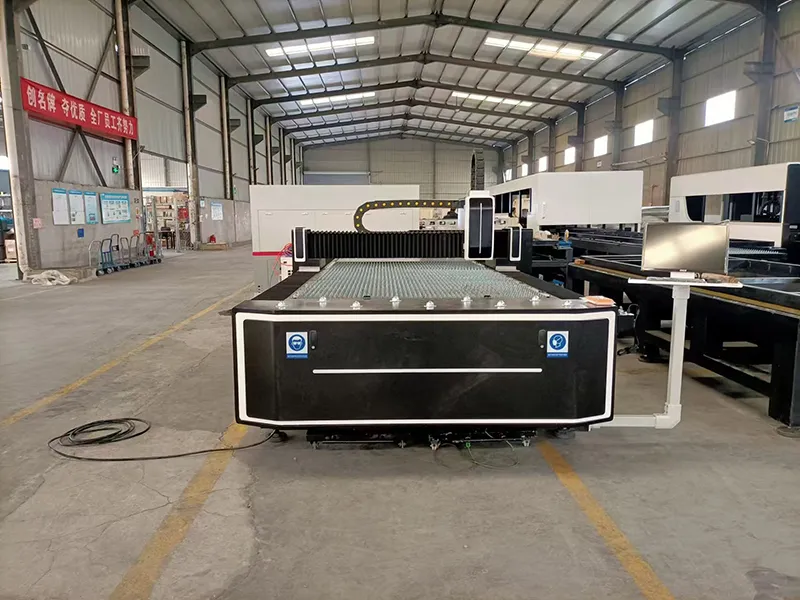1. Focus:
1) Focus position:
The focus position of fiber laser cutter for metal determines the beam diameter and power density on the surface of the workpiece and the shape of the incision.
Changing the position of the focus on the fiber laser cutter for metal means changing the size of the spot on the surface and inside of the plate.
The focal length on the fiber laser cutter for metal becomes larger, the spot becomes thicker, and the cutting seam is wider, which in turn affects the heating area, the size of the cutting seam, and the slag discharge capacity.
2) Focus diameter:
The diameter of the focus affects the width of the incision, and the diameter of the focus can be changed by adjusting the focal length.
At the same power, the higher the focal length, the more dispersed the energy absorbed by the plate; the thicker the plate, the larger the focal length and the wider the slit.
Comparison of the cutting advantages of this fiber laser cutter for metal:
The zero-focus spot is the smallest and the slit is the narrowest.
The positive focus cutting section is smooth, and the cutting speed is relatively slow.
The cutting speed of negative focus is faster, about twice that of positive focus, but the cutting section is rougher.
Scope of application:
Zero focus: suitable for high-precision sheet cutting with fast speed.
Positive focus: It is suitable for cutting medium-thick plates with requirements for cutting cross-section. The thicker the plate, the higher the focus.
Negative focus: It is suitable for cutting medium-thick plates with low cross-section quality requirements. The thicker the plate, the lower the focus.

Common applications of fiber laser cutter for metal:
Zero focus: Thin metal sheet.
Positive focus: Stainless steel nitrogen/air cutting, carbon steel oxygen cutting, etc.
Negative focus: Carbon steel oxygen cutting, aluminum and brass nitrogen/air cutting, carbon steel nitrogen/air cutting, stainless steel nitrogen/air cutting, etc.
2. Speed:
Speed is an important parameter in the cutting process using fiber laser cutter for metal.
When purchasing any model or style of laser cutting machine, there are usually certain speed parameters for our reference.
However, fiber laser cutter for metal is too fast and may cause slag problems.
When the speed is too fast, the residence time of the laser beam on the surface of the material is insufficient, causing the material to fail to melt fully.
These materials that are not completely melted will remain in the cutting gap, forming slag.
The solution to this problem is to appropriately reduce the cutting speed to ensure that the laser beam has enough time to stay on the surface of the material and make the material fully melt.
3. Gas purity:
Gas purity is also important for the laser cutting process.
Gases of different purities will have an impact on the effect of laser cutting.
When the purity of the gas is insufficient, the oxygen content in the cutting gap will increase, resulting in insufficient oxidation reaction. In this case, the slag at the bottom of the cutting may increase, and it is difficult to remove.
The solution is to increase the purity of the gas to promote the oxidation reaction and make the cutting fuller and cleaner.
When the gas is too large, the air flow in the cutting gap will become disordered, causing the melt to be unable to be completely separated.
In this case, the slag at the bottom of the cut may be reduced, but a deep texture will appear on the cross-section. The solution is to make the air flow more stable and uniform by adjusting the gas flow and pressure to reduce the appearance of textures.

